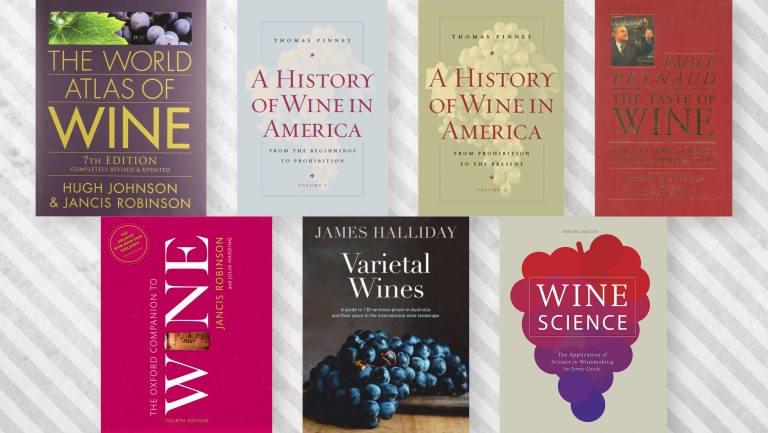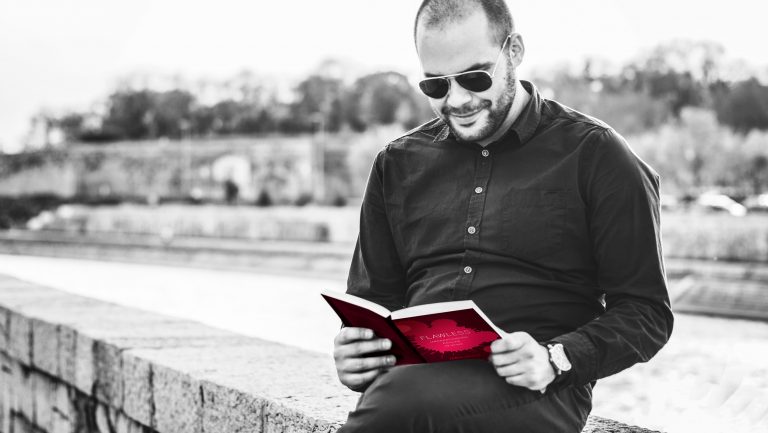My first taste of wine was at friend’s Passover seder, likely around 1988 or 1989. It was Manischewitz’s Concord Grape (nonvintage). I can’t recall exactly what it tasted like, but the brand’s current description of “sweet but balanced with a generous mouthfeel” seems like it would’ve been an accurate description for what I experienced. I was about six years old at the time, so I didn’t take tasting notes, but I distinctly remember how the wine made me feel: warm, with a lingering sense of awe.
When I started formally studying wine in 2003, I found myself seeking to better understand the pleasure I’d experienced from sipping the Manischewitz all those years ago. With Wine for Dummies (then in its third edition) as my guide, I began to develop an appreciation for the seemingly endless topic wine could be. I remember rushing back excitedly from the wine store with a bottle of Louis Jadot Beaujolais and explaining to friends how it was going to be very high in quality because it was an AOC wine, which makes me laugh—and cringe a little—to think of now.
I have since read many books on wine in an effort to keep broadening my knowledge. Like the universe, the wine canon is constantly expanding. No sooner do you finish a book than a new one is released; bestsellers and classics cycle through multiple updates, revisions, and editions. Nonetheless, it’s that feeling of elation—of being awestruck—that compels me to keep reading about and studying wine.

Don’t miss the latest drinks industry news and insights. Sign up for our award-winning newsletters and get insider intel, resources, and trends delivered to your inbox every week.
The consummate wine professional possesses an ability not just to recite facts but to explain them. Here are the books I believe are essential in the pursuit of that endeavor. Some are classics, some near forgotten or barely known; all are thorough, but also thoroughly accessible. Some, like The Oxford Companion, though widely owned, are probably gathering dust as many would prefer to look something up on Wikipedia. All of these books deserve to be read and revisited often, as they transcend the everyday. They provide wine professionals with the knowledge and language necessary to create their own compelling narratives.

The Reference Section
The Oxford Companion to Wine, Fourth Edition
by Jancis Robinson and Julia Harding (Oxford University Press, $65)
The World Atlas of Wine, Seventh Edition
by Hugh Johnson and Jancis Robinson (Mitchell Beazley, $60)
It should come as little surprise to anyone working in the wine industry that these two books are essential reading. The Oxford Companion to Wine (2015) is a compendium of everything known about wine, while The World Atlas of Wine (2013) serves as the ultimate visual aid to wine’s geography. These are large and heavy reference works written by titans. For those in the wine industry, poring through them is akin to a rite of passage. As someone who teaches others about wine, I have a sneaking suspicion that many never actually read The World Atlas of Wine; this is a shame, as its writing is the rare combination of approachable and comprehensive. While neither of these books is meant for light beach reading, some entries in The Oxford Companion to Wine—particularly those written by Robinson herself—are full of wit and levity. The entry on “wine writing” begins by calling it a parasitical activity. While none of the 912 pages are numbered, there’s plenty of room for some humorous Easter eggs.
Science Class
Varietal Wines
by James Halliday (Hardie Grant, $44.95)
I suspect that many wine professionals who purchased Robinson’s unwieldy, six-pound tome Wine Grapes (coauthored by Julia Harding and José Vouillamoz) just don’t use it as much as they’d imagined they would. The reality of the business means that we’re more often focused on, say, a dozen or so grape varieties, despite our fascination with the other 1,356. To this end, Halliday’s Varietal Wines (2015) obliges the open-minded reader. The book is an effective encyclopedia of more than 100 grape varieties, and it dialogues, reflects, and sometimes disagrees with Robinson. It focuses on grape varieties through the lens of Australia, but don’t let this prevent you from appreciating it; Halliday is one of the best wine writers out there, and there’s plenty of international coverage. For example, the chapter on Chardonnay gives equal attention to Australia and other countries. Nearly every page bursts with interesting facts. Did you know that Garnacha wasn’t planted in Rioja until phylloxera arrived in 1901? I didn’t, and I never expected to learn such a thing when I first picked this book up. Now it’s one of my go-tos.
The Taste of Wine: The Art and Science of Wine Appreciation
by Émile Peynaud (Wine Appreciation Guild, out of print)
Émile Peynaud has been called the forefather of modern enology, a title fitting for a man who furthered the world’s understanding of the process of malolactic fermentation. The Taste of Wine (1987, English translation) is his exploration of human sensation and wine language. With brilliant exactitude, Peynaud developed a vocabulary of tasting and rules for its usage. In the preface, he explicitly addresses all his potential readers—the amateur, the wine producer, the wine merchant, and the enologist. This book is for them all. It’s a shame that the book is currently out of print, as so few others accomplish what it does—effectively teaching tasting. If you can find a used copy, snag it. (Alternatively, Jamie Goode’s I Taste Red is an excellent modern-day embodiment of this classic.)
The Science of Wine: From Vine to Glass, Second Edition
by Jamie Goode (University of California Press, $39.95)
Jamie Goode started blogging about wine in 2001. Rather than merely spouting off opinions, he made compelling arguments based on facts and logic (something of an anathema in the world of purple wine writing). While his passion was never in doubt, it was likely his PhD in plant biology that adequately prepared him to write The Science of Wine (2014). Divided into three parts—the first on viticulture, the second on vinification, and the third on tasting—this book cuts through the noise to present its readers with nuanced takes on topics such as biodynamics, sulfur dioxide, and Brettanomyces. It’s as comfortably technical as one can get without needing to read Wikipedia entries on chemistry as a primer. The Science of Wine is a joy to read, and Goode has gone on to write other fantastic books, like Authentic Wine and the aforementioned I Taste Red.
History Lessons
A History of Wine in America, Volume 1: From the Beginnings to Prohibition
by Thomas Pinney (University of California Press, $38.95)
A History of Wine in America, Volume 2: From Prohibition to the Present
by Thomas Pinney (University of California Press, $38.95)
The first volume of Thomas Pinney’s magnum opus, A History of Wine in America, was published in 1989. It took him another 16 years to complete the second volume, and it’s understandable why. Combined, these two books are the vinous equivalent of Braudel’s historical tome Civilization and Capitalism or Churchill’s History of the English-Speaking Peoples. Pinney’s paean to American wine is sweeping, stirring, comprehensive, and insightful. It’s all the more impressive that he penned these volumes as a professor of English and not as a wine industry insider; perhaps that’s why they’re so academically rigorous. Every chapter is digestible on its own, whether it’s about Frank Schoonmaker’s influence on wine quality during World War II (Chapter 6 in Volume 2) or Thomas Jefferson’s role in the establishment of serious winegrowing in the 19th century (Chapter 5 in Volume 1). If Ken Burns were to make a 12-part documentary on the history of American wine, these books would serve as its backbone.

Dispatch
Sign up for our award-winning newsletter
Don’t miss the latest drinks industry news and insights—delivered to your inbox every week.
Scott Rosenbaum is CEO of Ah So Insights, a wine and spirit industry newsletter and consultancy. Scott was formerly the vice president of T. Edward Wines & Spirits, a New York-based importer and distributor.







